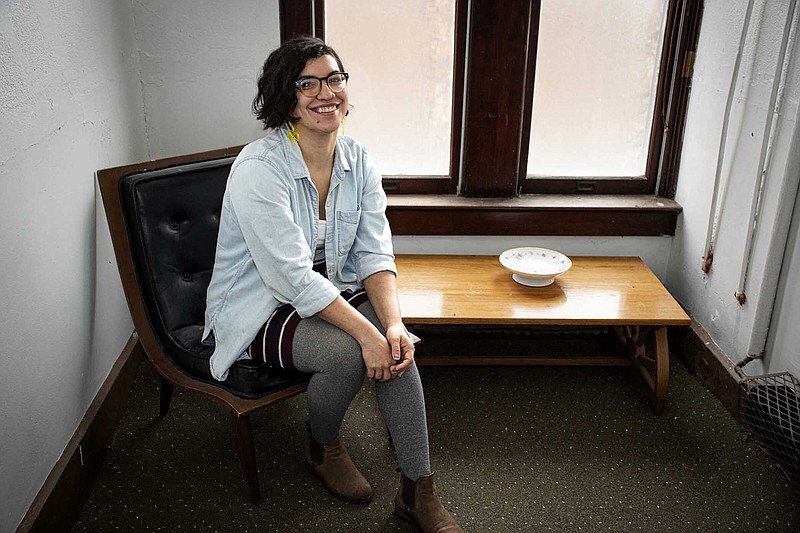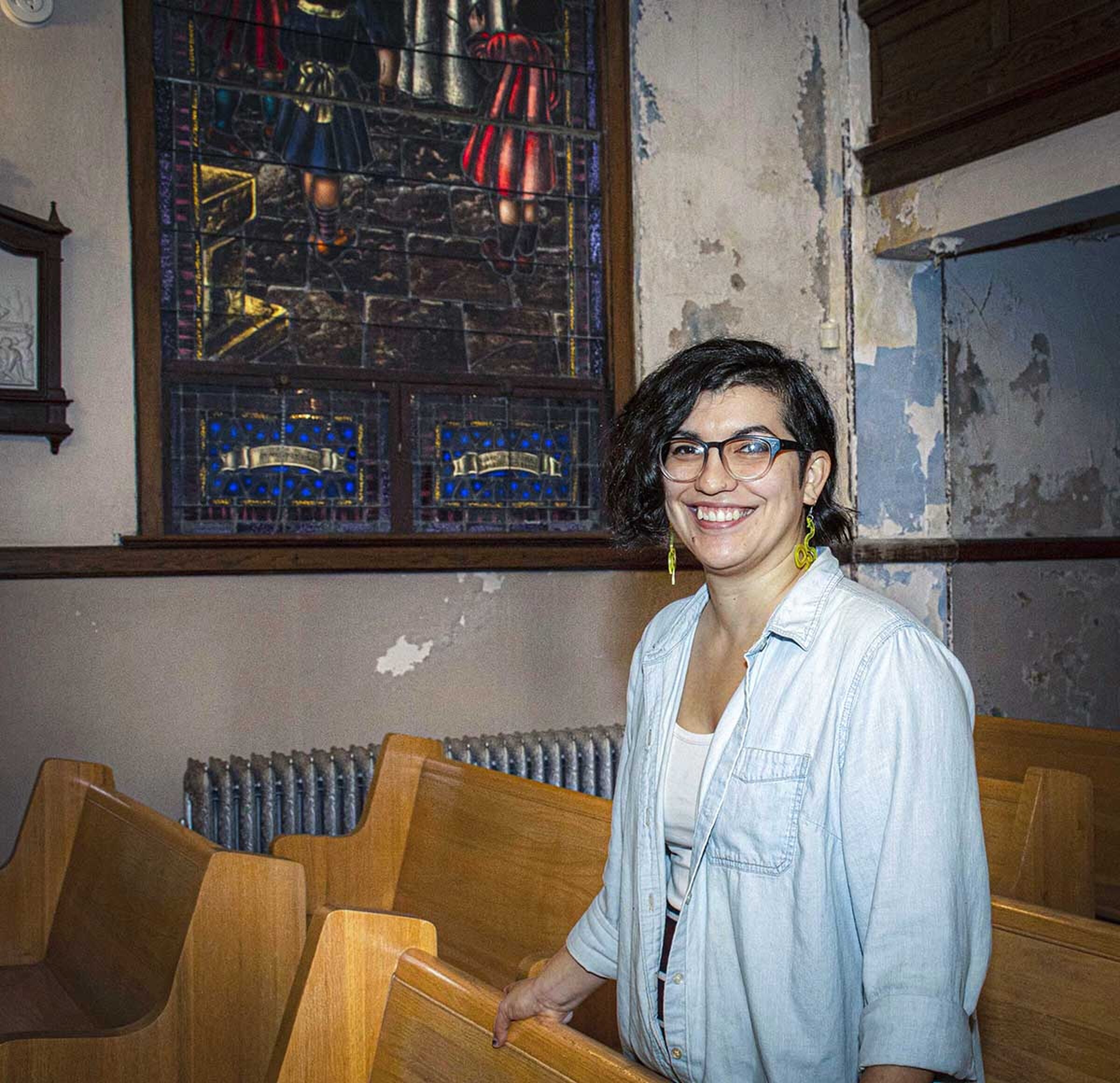The St. Joseph Center of Arkansas sits on a hill with views of Levy, Argenta and Little Rock. It was built as an orphanage and has served as a hotel in World War I, a school, daycare and nursing home.
The historic building has been in continuous use since it was built, says Laura Fuentes, a board member of the center. Fuentes should know, she also serves as the center's archivist.
Fuentes, an archaeologist with Flat Earth Archaeology, grew up at Little Rock Air Force Base, but didn't know about the building until a few years ago before she became a board member.
"I found out about it because I was an officer with the Central Arkansas Chapter of the Arkansas Archeological Survey," she says. She explains that there was a St. Joseph board member who was an archaeologist and told the chapter about a collection of St. Joseph items at a monastery in Fort Smith. Many of the nuns from St. Joseph had transitioned there when the orphanage closed or as they retired. The items have since been brought back to St. Joseph. Fuentes says the visiting board member suggested it would be great if the chapter could volunteer and catalog the items.
Through that project, Fuentes became active with the center.
"So it was basically through archaeology, I got involved here. And it's such a cool place. I love it. I actually wrote my master's thesis on here. And after that, they asked me to be a board member."
Designed by architect Charles Thompson and completed in 1910, St. Joseph Orphanage Home was the pet project of Little Rock's Bishop John Morris.
"He wanted to make something for the community to have kind of a safe space to land," she says explaining that in addition to children without parents, the home also served as a place for children whose parents couldn't take care of them, handicapped children and even elderly adults.
The bishop bought 720 acres so the home would be a self-sufficient farm with orchards, animals and gardens. The centerpiece is the 56,000-square-foot building with a chapel, classrooms, dormitories, kitchen, bakery, laundry and dining room.
EFFECTS OF WWI
Fuentes says that much of the acreage was lost when the Military Department leased 320 acres during World War I. The lands were adjacent to Camp Pike. The area was called Belmont and was "designed to offer good clean wholesome entertainment" to the young military men. There was a commission in charge of making sure there were activities for the soldiers.
"They had a heavy hand in developing Belmont and making sure that it was within walking distance so when the guys could, they would walk over here. It was kind of enclosed and self contained. It was basically like a miniature city, she explains, saying there was a post office, bank, skating rink, movie theater, cafes and a department store. The orphanage was turned into a hotel for officers and visiting family. The grounds held an officers club, one of the nicest in the country, says Fuentes, but it burned down after a couple of years.
The orphans and other residents returned after the war and Fuentes says that aerial photos show all the buildings but the orphanage were gone by the 1930s.
The archives are in possession of a variety of ephemera including photo albums. Fuentes says one big project she'd like to do, hopefully with some trained volunteers, is to scan in the photos and then create a database of the names of those in the photographs. She sees this as a way for people researching family history to have photos of family members.
She hopes to work with the diocese so that when people go there to do research and ask for records on their family, the diocese can direct them to the archive at St. Joseph.
"I really think that we have some of the only pictures that maybe these families have of their family members at this age."
LEASING SPACES
As a board member, Fuentes isn't always looking to the past, but also to the future of the center. In 2010, The St. Joseph Center of Arkansas was founded after it signed a 50-year lease with the Little Rock Diocese.
"We want to make St. Joseph's Center kind of a community center -- basically return it to its original purpose. We've always had the farm aspect to it and it is a century farm," she says, saying that Bishop Morris worked with the state's agriculture department, which did agricultural experiments on the farm.
"So it's always been something that's been connected to the community on a larger scale. And we're trying to kind of re-engage with the community and make it more useful. One of the ways that we've done that is, we've just installed a walking track. So there's a trail that you can go and hike, which is super useful for people in the area."
The center -- at 6800 Camp Robinson Road -- also leases spaces for artist studios, has tours and Laman Library hosts story time. Recently, several spaces in the building have been turned into Airbnb rentals.
"So we're trying to just kind of pull people in as many ways as we can, both locally and from out of state because we've got those Airbnbs now, so other people even from around the state or from different states are coming in."
Then there is the farm stand which accepts SNAP or EBT dollars. The farmers market provides access to surrounding areas to buy fresh vegetables and produce.
"And it's amazing stuff and it gets [the community] out here to our location," she says about the stand. "They have access to the animals, too. We have the animal ambassador program, so you can volunteer for that. And for people who maybe have never seen a cow, or a chicken or goat, you know, they can come and they can help learn about the animals and help take care of them. Which helps us, but who doesn't want to hang out with the sheep?"
To find out more about the St. Joseph Center of Arkansas' interesting past or to help now by volunteering, visit stjosephcenter.org.

